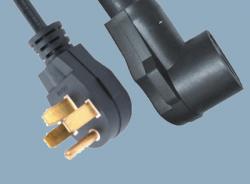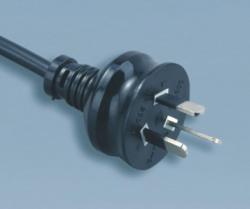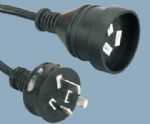86-0574-62162348
Categories
- Power Cord
- America Power Cords
- Europe Power Cords
- Australia Power Cords
- UK Power Cords
- Korean Power Cords
- Japan Power Cords
- Italy Power Cords
- South Africa Power Cords
- Swiss Power Cords
- Argentina Power Cords
- Brazil Power Cords
- Israel Power Cords
- Denmark Power Cords
- China Power Cords
- Russia Power Cords
- Singapore Power Cords
- Saudi Power Cords
- Indonesia Power Cords
- Thailand Power Cords
- IEC 60320 Power Cords
- Locking Power Cord
- Dryer Power Pord
- Industry Plug
- Extension Cord
- Rubber Insulated Sheathed Flexible Cord
- PVC Flexible Power Cable
- Power Strip
pleated filter cartridge factory
high flow filter cartridge
large flow filter cartridge
membrane pleated filter cartridge
capsule filter suppliers
capsule filter 0.2 micron
capsule filter price
pvc dildo
fat pocket pussy
lamb skin dildo
mushroom head dildo
huge dildo
water filter cartridge
- Power Cord
- America Power Cords
- Europe Power Cords
- Australia Power Cords
- UK Power Cords
- Korean Power Cords
- Japan Power Cords
- Italy Power Cords
- South Africa Power Cords
- Swiss Power Cords
- Argentina Power Cords
- Brazil Power Cords
- Israel Power Cords
- Denmark Power Cords
- China Power Cords
- Russia Power Cords
- Singapore Power Cords
- Saudi Power Cords
- Indonesia Power Cords
- Thailand Power Cords
- IEC 60320 Power Cords
- Locking Power Cord
- Dryer Power Pord
- Industry Plug
- Extension Cord
- Rubber Insulated Sheathed Flexible Cord
- PVC Flexible Power Cable
- Power Strip
Future Products
Method for assembling a power cord on an appliance
Appliances typically include components requiring a particular connection to a power source, such as a specific phase arrangement for AC power cord or a specific positive and negative connection for DC power. Furthermore, connection of the power cord to the appliance must be mechanically secure to prevent possible disconnection of the cord and to prevent damage to the cord where it interfaces with the appliance.
which can lead to slow manufacturing of the appliance or possible errors in the connection of the power cord. Difficulties in connecting the power cord to the appliance can also hinder the possibility of automating the assembly. These and other considerations concerning power cords for appliances are well known in the art.
During assembly, the bushing 20 is positioned on the power cord 10 as described above. Unconnected ends of the cord wires 14, 16, and 18 are disposed through the hole 32 in the lower end frame 30. These unconnected ends are stripped to expose conductive ends of the cord wires 14 and 16. The bushing 20 on the cord 10 is then installed into the hole 32. The bushing 20 is forced into the hole 32 by simultaneously pressing the bushing 20 into the hole 32 and crimping the cord 10 in the bushing 20. A tool may be required to install the bushing 20 and cord 10 in the hole 32.
The connection of the electrical system 40 of the disposer to the power supply requires correct connection of the cord wires 14, 16 to the disposer leads 44 and 46 and the ground wire 18 to the lower end frame 30. Typically, the wires and leads are simply color-coded to facilitate their proper connection. Except for such color-coding, there is no guidance or built-in system for determining or indicating which cord wires connect to which disposer leads. Consequently, the possibility of incorrectly connecting the wires and leads is increased.
Although the electrical connection described above is effective, manufacturers strive to provide quicker and easier ways to connect power cords to appliances, such as food waste disposers. It is desirable to have a power cord connection that can be easily performed without requiring special tools, a number of steps, or considerable effort. In addition, it is desirable to have a power cord connection that grounds a frame of the appliance without a traditional fastener, such as ring terminal 19 and screw 37.
The plug is connected to an end of the power cord. In one embodiment, the plug houses push-in terminals, which are electrically connected to first and second wires of the power cord.A first portion of the plug defines openings to receive leads from the disposer, which electrically connect to the push-in terminals housed in the plug. The portion positions through an aperture defined in a metal portion or lower end frame of the disposer.A second portion of the plug is connected to the cord and defines a shoulder with the first portion. A conductive ring is disposed on the shoulder and is electrically connected to the ground wire of the power cord. The conductive ring contacts the metal frame of the disposer.
which can lead to slow manufacturing of the appliance or possible errors in the connection of the power cord. Difficulties in connecting the power cord to the appliance can also hinder the possibility of automating the assembly. These and other considerations concerning power cords for appliances are well known in the art.
During assembly, the bushing 20 is positioned on the power cord 10 as described above. Unconnected ends of the cord wires 14, 16, and 18 are disposed through the hole 32 in the lower end frame 30. These unconnected ends are stripped to expose conductive ends of the cord wires 14 and 16. The bushing 20 on the cord 10 is then installed into the hole 32. The bushing 20 is forced into the hole 32 by simultaneously pressing the bushing 20 into the hole 32 and crimping the cord 10 in the bushing 20. A tool may be required to install the bushing 20 and cord 10 in the hole 32.
The connection of the electrical system 40 of the disposer to the power supply requires correct connection of the cord wires 14, 16 to the disposer leads 44 and 46 and the ground wire 18 to the lower end frame 30. Typically, the wires and leads are simply color-coded to facilitate their proper connection. Except for such color-coding, there is no guidance or built-in system for determining or indicating which cord wires connect to which disposer leads. Consequently, the possibility of incorrectly connecting the wires and leads is increased.
Although the electrical connection described above is effective, manufacturers strive to provide quicker and easier ways to connect power cords to appliances, such as food waste disposers. It is desirable to have a power cord connection that can be easily performed without requiring special tools, a number of steps, or considerable effort. In addition, it is desirable to have a power cord connection that grounds a frame of the appliance without a traditional fastener, such as ring terminal 19 and screw 37.
The plug is connected to an end of the power cord. In one embodiment, the plug houses push-in terminals, which are electrically connected to first and second wires of the power cord.A first portion of the plug defines openings to receive leads from the disposer, which electrically connect to the push-in terminals housed in the plug. The portion positions through an aperture defined in a metal portion or lower end frame of the disposer.A second portion of the plug is connected to the cord and defines a shoulder with the first portion. A conductive ring is disposed on the shoulder and is electrically connected to the ground wire of the power cord. The conductive ring contacts the metal frame of the disposer.
- Contact Us
- Simen Twon,Yuyao City,Zhejiang,China,315472
- 86-0574-62162348
- 86-0574-62160100
- [email protected]
- hoobo.show1
- Terms and Conditions
- Privacy Statement
- Need help
- Home
- About us
- Products
- Download
- News
- Equipments
- Tech-Documnets
- Contact
- Products
- Power Cord
- IEC 60320 Power Cords
- Locking Power Cord
- Dryer Power Pord
- Industry Plug
- Extension Cord
- Rubber Insulated Sheathed Flexible Cord
- PVC Flexible Power Cable
- SUBSCRIBE
- Join us and get detail information,technical parameter and new products etc.
- [email protected]
- hoobo.show1
- 86-0574-62162348
- 86-0574-62162348








